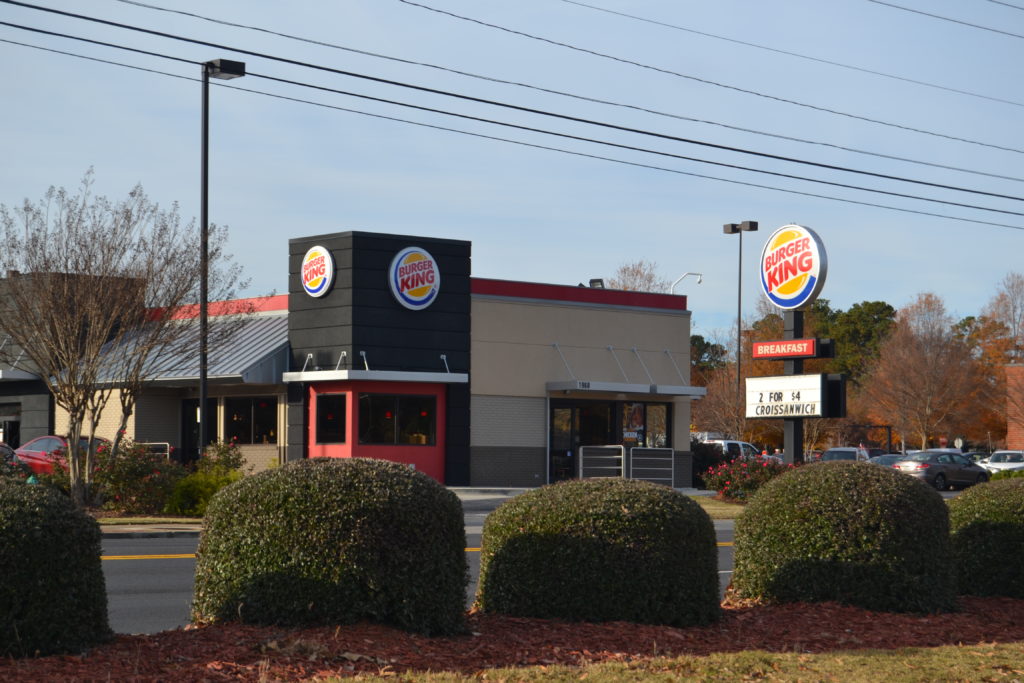Fast food policy leaves a bad taste in students mouths
Fast food is a convenient and affordable alternative to school food for most students at Cedar Shoals due to close proximity to the school. Students have easy access to fast food restaurants such as Dunkin’ Donuts and Chick-Fil-A.
However students who bring in fast food disturb the school’s learning environment which poses an annoyance to teachers.
“I really don’t like having fast food at school with the exception of breakfast. I understand why some kids bring in food when they are running late and grab breakfast on the way to school. But we provide free meals here so there is really no reason you should be eating fast food,” said Bryan Moore, English department.
One common disturbance is students ordering food from outside sources such as Uber Eats. Students can order food at the tap of a button to receive their food hand-delivered to the school. Students who order food may lose valuable learning time if they leave class to receive their order.
“In all honesty it is very easy for me to bring food into school. I bring in fast food nearly every single morning because I don’t get here on time to get school breakfast,” said senior Eric Pompa.
“Typically I order fast food to school two to three times a week. Usually when I get food in the morning, I am not late but with lunch it takes a bit longer since it’s busier. I don’t think its big of a deal because if I am not hungry I pay better attention in class.” said senior Erick Arenales.
Career Academy students and seniors are the main offenders when it comes to the fast food policy. Students who attend the Career Academy are given the freedom to either to eat lunch on the Career Academy campus or wait until they arrive to Cedar to eat lunch
“A lot of times we try to stop the students at the door and ask them to finish it outside. Students who are coming in from the Career Academy have plenty of time to eat it there or on the way to school, but I feel that they wait to get to school to bring it here to eat it because they want to show off that they are eating outside food,” said Principal Derrick Maxwell.
“I think bringing in fast food can both be a positive and a negative thing because it is a distraction and people tend to have accidents in class such as dropping drinks on the floor. However, based on personal experience, none of my teachers have made a big deal about me bringing in fast food in the mornings,” said Pompa.
The students who get around the outside food policy are in the minority, and most abide by the rules.
“I don’t feel like there is a need to eat fast food, I mean it tastes good, but it is not very beneficial to you. I’d rather just wait until I arrive to Cedar to eat school lunch,” said Amaya Maddox, 10th grade Career Academy student.
In addition, students bringing in fast food can cause harm to students who have severe allergies.
“Students don’t always understand the reason for the fast food policy, but one of the main reasons is that we can’t regulate for certain allergies. A lot of foods are processed or cooked in materials such as peanut oil where students have really severe allergies, and it is easier to monitor students’ allergens with the food that comes through the cafeteria,” said Mr. Maxwell.
Outside food also goes against the Model Nutrition School Policy implemented at the school through the Healthy, Hunger-free Kids Act Of 2010. The Local School Wellness Policy in Clarke County states that “Each school that participates in the National School Breakfast and/or Lunch Program (NSBP/NSLP) is required to have a Local School Wellness Policy to ensure school meal nutrition guidelines meet the minimum federal school meal standards.”
Even though the food at Cedar is both free and meets Georgia’s health standards, students complain about the look and taste of the food that is served free of charge during the morning and afternoon.
“The school lunch isn’t lunch. It’s visually unappetizing and just a sorry excuse for food. Lunch needs to be actually prepared and cooked on some type of proper way, not just tossing a bunch of frozen food into a big oven just to meet a quota that no one eats and just piles up in the trash,” said Arenales.
Other students are less critical of the quality and simply want more options.
“People would be more willing to eat school lunch if they changed the menu more often and had a bigger variety of food,” said Johan Rodriguez, senior.
Arenales thinks that there are more creative solutions to better satisfy students who do violate the outside food policy because they find the cafeteria food unappealing.
“Instead of students leaving school and taking a long time just to get a simple meal, we need food trucks or food providers at the school which rids the kids from leaving campus but also provides a way for outside food to be placed into the school,” said Arenales.




